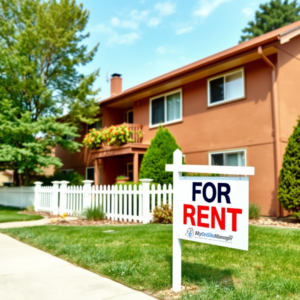In the city that never sleeps, rent prices certainly don’t take a break. A recent report reveals that New York City remains the most expensive city for renters in the United States, with 39 of the nation’s top 100 priciest ZIP codes located within its borders. This finding reinforces a long-standing trend: living in NYC comes with a hefty price tag—one that continues to rise year after year.
For renters and housing advocates alike, this news is both familiar and alarming. It raises fresh concerns about housing affordability, access, and the economic pressure placed on everyday New Yorkers.
Tribeca Tops the List — Where Renters Pay a Premium for Prestige
Out of all NYC neighborhoods, Tribeca in Manhattan claimed the title of the most expensive rental ZIP code in the entire country. The median monthly rent in Tribeca reached $8,295, placing it above other famously pricey areas like Beverly Hills and San Francisco’s Marina District.
Tribeca’s appeal is no mystery. With its cobblestone streets, luxury lofts, celebrity residents, and proximity to Lower Manhattan’s business hubs, it’s long been one of the city’s most coveted (and exclusive) addresses. But that prestige comes with a cost few can afford.
Not far behind are:
-
SoHo, with a median rent of $6,100
-
Flatiron District, at $5,900
-
DUMBO in Brooklyn, which clocks in at $5,750
These figures don’t just represent luxury—they highlight how deeply high rent prices have penetrated various parts of NYC, including neighborhoods that were once considered up-and-coming or more affordable alternatives.
A Local Surge Amid National Slowdown
What makes NYC’s soaring rents even more eye-catching is the fact that most of the country is experiencing a decline in rental prices.
According to the report:
-
Nationally, median asking rents fell by 1.1% in December 2024, compared to the same time the previous year.
-
In contrast, New York City saw an increase of 5.6% over that same period.
That means while renters in cities like Austin, Las Vegas, and Phoenix are seeing slight relief, New Yorkers are feeling the squeeze even more. The growing disparity is linked to a mix of ongoing demand, limited housing stock, and the continued influx of professionals, students, and families who want to live in NYC despite the cost.
The Bigger Picture: Median Rent Across NYC
Zooming out, the median rent across all boroughs—Manhattan, Brooklyn, Queens, and the Bronx—stood at $3,425 as of December 2024. That’s a $76 jump from the previous year.
Let’s break it down even further:
-
Manhattan’s median rent hit $4,530, a 6.4% year-over-year increase
-
The national median rent, by comparison, was $1,753
That means renting in NYC costs nearly double the national average. And for many, that level of expense is simply unsustainable—especially when paired with rising utility costs, transportation expenses, and grocery prices.
Why NYC Rent Remains So High
Several factors contribute to the city’s unrelenting rental prices:
-
Limited Inventory – New developments haven’t kept pace with demand. Zoning restrictions, high construction costs, and lengthy approval processes have slowed down housing growth.
-
High Demand – Despite the costs, people continue to move to NYC for career opportunities, world-class culture, and its status as a global capital.
-
Return to Urban Living – Post-pandemic trends show that more people are returning to major cities, reversing the brief suburban migration boom seen in 2020–2021.
-
Luxury Dominance – Much of the new housing stock being built caters to high-income renters, further squeezing out middle-class and lower-income options.
What This Means for Renters and the City
As NYC cements its status as the most expensive rental market in America, the implications are serious:
-
Housing Affordability: More residents are devoting an unsustainable portion of their income to rent. In many cases, people are paying 40–50% of their monthly wages just to keep a roof over their heads.
-
Displacement Risk: Long-time tenants are being priced out of their neighborhoods, particularly in rapidly gentrifying areas.
-
Economic Inequality: The wealth gap continues to widen as luxury units rise while affordable housing lags behind.
-
Pressure on Local Government: City officials face mounting pressure to create more equitable housing policies and invest in affordable development projects.
Final Thoughts
New York City’s high cost of living is nothing new—but this report offers a sobering reminder of just how extreme the rental landscape has become. With 39 ZIP codes ranked among the 100 most expensive in the U.S., the city is not just leading the list—it’s dominating it.
For current and future renters, this means navigating an intensely competitive market where prices show no signs of cooling. And for policymakers, it signals a pressing need to prioritize housing affordability as a core issue for the city’s long-term livability and economic health.
Source:
MSN: NYC remains the most expensive city for rent in the U.S. with 39 ZIP codes in top 100 list

